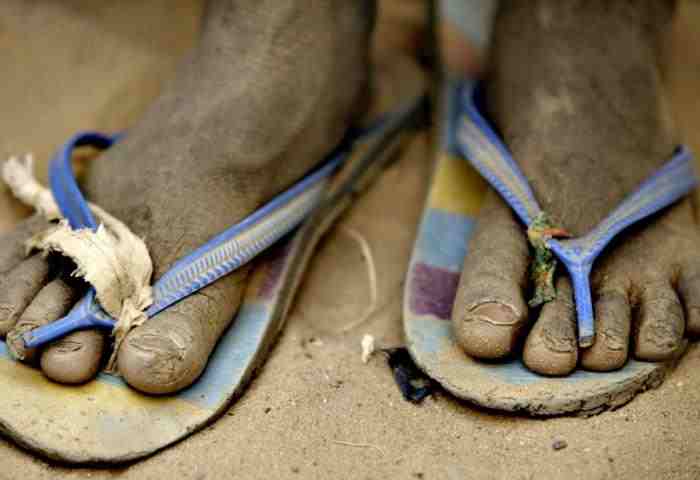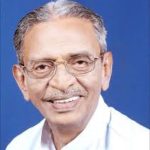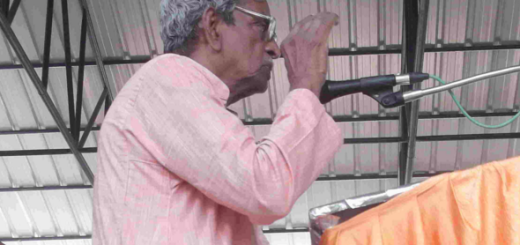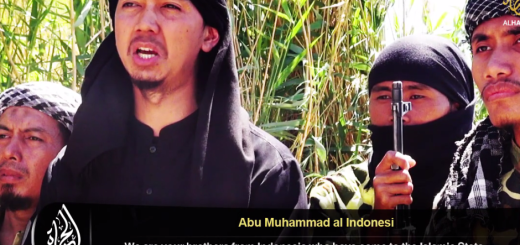Little Hope In An Unequal World

By Ajay Ghosh, Editorial, in Universal News Nerwork, Aug.29/ 16
(Note: The title itself is self evident. The world has been so all the time. Inequality among humans – in social, cultural, religious, economic and political domains — has brought only misery, not happiness to those who are short changed by their own or some one else’s fault. All reformers, whether religious or political—were fighting to reduce it as much as possible. The main reason for their failure is not that there is not enough for every one’s NEED but not for every body’s GREED.
So the sole solution to reduced inequalities is to curb human greed, which is easily said than done. Ajay Ghosh, the editor of Universal News Network, NY, deserves to be thanked and congratulated for providing the readers an enormous amount data about inequalities both in India and USA. Ajay happens to be a good friend of mine from Fr. Xavier Vadakkekara’s time in Indian Currents, New Delhi, when he used to be a regular coloumnist from US and I associate editor with Fr.Xavier. Ajay even visited my house in Ernakulam in one of his trips to India. The News Network he edits from NY, like CCV, is a source of very valuable information for comparative study on both India and US.
Facts about inequalities impress, comparisons provoke thinking and conclusions that you and I are equally to blame unsettle us to take at least a few baby steps to come to the aid of the down trodden in our midst. So the report given below deserves attentive reading and reflection with a view to what you and I can do about it. Of course, the data provided, though from authoritative sources, need not be totally true, which is true in every news reporting. But they urge all of us to think constructively about what we canpossibly do first and foremost, about caste based inequalities and the sufferings gone through by Dalits and untouchable in our midst. How can any Indian fail to hang his/her head in shame that the vast sections of 2.3 billion of the Indian population is made of  untouchables and poor. Poverty anywhere is a threat to prosperity everywhere. You can never be an island of affluence in a sea of misery. So it is urgent for all of us, in our own self-interest, to do something on a war footing to close the gap between the haves and have-nots in our midst. james kottoor, editor)
untouchables and poor. Poverty anywhere is a threat to prosperity everywhere. You can never be an island of affluence in a sea of misery. So it is urgent for all of us, in our own self-interest, to do something on a war footing to close the gap between the haves and have-nots in our midst. james kottoor, editor)
We live in an unequal world. World Bank figures for world poverty reveals a higher number of people living in poverty than previously thought to be in most nations today, Inequality—the gap between the rich and the poor—is quite high and often widening. High levels of inequality will affect social cohesion and lead to problems such as increasing crime and violence. Almost half the world — over 3 billion people — live on less than $2.50 a day. The GDP (Gross Domestic Product) of the 41 Heavily Indebted Poor Countries (567 million people) is less than the wealth of the world’s seven richest people combined. One billion children live in poverty today, which is half of world’s total children. Eighty percent of the global wealth is in the hands of 15% of the “privileged.”
Poverty is the state for the majority of the world’s peoples and nations. A report on inequality published by The Economist recently corroborates this sad scenario that deserves attention: one in two people live on less than two dollars a day, one in three have no access to electricity, one in five have no access to drinking water, one in six is illiterate. One in every seven adults and one child in three suffers from malnutrition. Every five seconds a child dies of hunger in the world, although there is fertile land for growing food.
If the world around is facing poverty, the United States, the world leader, is not free from this evil. The US Census Bureau states that nearly 13 to 17% of Americans are living below the federal poverty line at any given point in time, and roughly 40% falling below the poverty line at some point within a 10-year time span. The recession that the country has been going through has affected the poor more than the others. Poverty rate in the US in 2009 was 14.3 percent — up from 13.2 percent in 2008, the second statistically significant annual increase in the poverty rate since 2004. In the same year, 43.6 million people were in poverty, up from 39.8 million in 2008 — the third consecutive annual increase in the number of people in poverty. This number is the largest in the 51 years for which poverty estimates have been published.
The relative poverty rate is higher among the colored people. Between 2008 and 2009, the poverty rate increased for non-Hispanic Whites from 8.6 percent to 9.4 percent, for Blacks from 24.7 percent to 25.8 percent, and for Hispanics from 23.2 percent to 25.3 percent. For Asians, the 2009 poverty rate was 12.5 percent, not statistically different from the 2008 poverty rate.
Poverty reduction is a central feature of every country’s agenda and contemporary poverty reduction strategies increasingly focus on “targeting the poor.” Over the past decades, policies and programs by nations across the globe have not resulted significantly in alleviating poverty. In recent decades, economic and social policies of the nations of the world have contributed to increasing poverty levels around the globe.
Government policies and their priorities play a significant role in poverty reduction or its increase. Quoting a Census Bureau report, Ronald Brownstein, a columnist, wrote that the United States lost ground during George Bush’s two terms. While Bush was in office, the median household income declined, poverty increased, childhood poverty increased even more, and the number of Americans without health insurance spiked. By contrast, the country’s condition improved on each of those measures during Bill Clinton’s two terms, often substantially. Under Bush, the number of people in poverty increased by over 8.2 million, or 26.1 per cent. When Clinton left office in 2000, the Census counted almost 31.6 million Americans living in poverty. When Bush left office in 2008, the number of poor Americans had jumped to 39.8 million, the largest number in absolute terms since 1960.
President Barak Obama recently acknowledged that inequality is on the rise “even though the economy is growing.” That growth hasn’t helped many people who lost mid-wage jobs during the recession. Half of the U.S. population is now considered poor or low-income. The U.S. is one of the wealthiest countries in the world, and yet nearly one-quarter of the nation’s residents recently said they had trouble putting food on the table over the past year, according to a survey by the Pew Research Center.
A recent report from the International Labour Organization says, income inequality in the U.S. is much worse than it is in other industrialized countries, where it is also an alarming problem. The gap between the rich and the poor is only getting wider as the median wage continues to fall. The top 1% own as much as 80% of the nation’s wealth whereas, the bottom 80% of the people own only 7% of the nation’s wealth.
Income inequality has become a familiar part of American life over the last half-century. Pulitzer Prize-winning journalist David Cay Johnston says, the bottom 90 percent of Americans saw their incomes grow by just $59 between 1966 and 2011, where as the average income for the top 10 percent of Americans rose by $116,071 on average over the same period.
In comparison with the US, the poverty level in India is even more alarming. The sheer number of people below poverty line is shocking. Although, the number of people living below the poverty line has shrunk to 21.9 per cent in 2011-12 from 37.2 per cent in 2004-05 on account of increase in per capita consumption, the total number of people in a country of over 1.1 billion is alarming.
According to Dean Nelson of The Telegraph, India now has a greater share of the world’s poorest than it did thirty years ago. Then it was home to one fifth of the world’s poorest people, but today it accounts for one-third, nearly 400 million. Based on a recent study, Nelson says, the number of extremely poor people had declined from half the world’s population in 1981 to one fifth in 2010, but it has increased in Sub-Saharan Africa and in India. On an all-India basis, there were 217 million poor in rural areas and 53 million in urban areas in 2011-12, as against 326 million and 81 million, respectively, in 2004-05. This means that roughly every fifth Indian lives below the poverty line.
Thomas Chandy of Save The Children said 200 million people had been lifted from poverty in the last two decades but the recent economic growth had left one third of the population untouched. “India’s status has gone down despite the economic growth, inequality has widened which makes the poor poorer. In child mortality, infant mortality and maternal mortality, India seems to have the largest populations in all these categories. We would like to see focused interventions [because] the most difficult areas remain untouched,” he said.
A recent United Nations Flagship report tilted, Combating Poverty and Inequality, based on extensive analysis of country case studies, found that increases in inequality are linked to a range of economic policies that have dominated the development agenda in recent decades. These include financial liberalization, regressive taxation, privatization in the context of weak regulation, public expenditure policies that fail to protect the poor during crisis or adjustment periods, and labour market policies that lead to precarious forms of flexibility, informalization and an erosion of minimum wages and union bargaining power. Other causes of rising inequality include disparities in educational attainment, technological change and employment policies that widen wage gaps between skilled and unskilled workers; rural-urban wage differentials in the process of structural change; inequality in asset ownership (including land); and unequal access to credit and basic production inputs, particularly in the agricultural sector.
World Bank president Jim Yong Kim said while the overall decline was “remarkable progress,” the remaining 1.2 billion people living in extreme poverty was “a stain on our collective conscience.” Poverty around the world is very alarming. More than 1.4 billion people across the globe are reported to be living in poverty so extreme that they can barely survive. Nearly 25,000 people die from hunger each day. At the same time, a new billionaire is created every second day. The call for a global safety net for all human beings has never been so urgent. The sharp and cruel realities of inequality and unjust policies must compel the international community to transform economic priorities and guarantee the universal securing of basic human necessities.
Former President Bill Clinton told Yale seniors that today’s college graduates will be left to deal with a world that has three major problems. “It is too unstable; it is too unequal, and it is completely unsustainable.” He urged them to change that, and said that will mean working together. I am reminded of what Victor Hugo, a French novelist, wrote: “The real relief to be provided to the poor is the abolition of poverty.” That’s the challenge that we all face today.
Recently, I had the privilege to attend a ceremony where 14 young and talented Indian American students from across the United States were honored in New York City. They had won an Essay contest on “My Role in Eradicating Hunger in India” organized by The New York Life. Of the hundreds of youth, who had participated, these 14 were chosen and they were sent out on a 14-days Journey to discover and experience India and its people.
The event in New York was the culmination of their journey. These 14 youngsters were full of zeal to “give back to their motherland.” These 18-23-year-old youngsters were born and raised in the US, studying in professional colleges here, ranging from Medicine to Computer Sciences. Now, after returning from India, where they witnessed and were face to face with real life struggles of the people in India, they had returned with full of zeal and enthusiasm to give back and enrich the lives of the people back in India.
In their personal sharing with a select audience, many of them adhered to the fact that this spirit of generosity and openness to reach beyond their own selves and see the larger interest of the community was instilled in their hearts and minds by their parents. They also said, they saw this spirit of giving to the less fortunate and to those who are in many ways are suffering from disadvantages in their lives, in their parents. After coming to this nation of plenty, they have not forgotten their origins, and their past lives back in India. Their parents were successful in imbibing in these youngsters the spirit of generosity and kindness.
I was touched by the stories of each individual as he/she shared with us how each of them found in the suffering people in India a sense of hope. They are not despaired in the midst of suffering and pain. They taught these youth the value of the many gifts and blessings of life we all take for granted everyday in our lives. These poor, illiterate, and disadvantaged people taught these educated young professionals the value of looking at the positive things in life rather than being discouraged by the obstacles of daily living. The lepers and the handicapped persons whom they met while in India, taught the youth to see how lucky they are to have a healthy body and mind.
These rich experiences have enriched the lives of the young tourists and they are ever enthusiastic about returning to India, especially after they graduate as Doctors, Teachers, Social Workers, Computer Professionals and Scientists, trying to touch the lives of as many people as possible.
Soon after coming back from India, many have already started doing fund-raisers for various projects back in India. One of them said, he will use his musical talents to raise awareness on the problems he saw in India. Another said, he has developed a website to share with other youth of his experiences, trying to inspire many others to come forward and give a helping hand to the people who are in suffering and pain.
Many of them have vowed to return to India, after they graduate and dedicate their time and resources at the service of the needy that they saw while they were in India during the two-week long journey. People such as these are the HOPE for a better world.
Living in a world that is self-centered, it’s important to imbibe in our children the values of generosity and kindness. When we as parents are willing to come forward to touch the lives of the needy, our children are witnesses to this reality and want to follow in our footsteps. When we forget our roots and are comfortable taking care of our own families here and forget our neighbor, we are not challenging our children to go beyond their personal selves and touch the lives of others.
The tragedy, often, is that when we are busy with our own work and the challenges of taking care of our own families, we tend to forget the path we have undertaken to reach where we are today. We have forgotten the people and the institutions that have helped us reach where we are and accomplish the achievements that we are so proud of. We are so engrossed in our lives, we tend to forget that there are many who need our helping hands to reach the heights that we have been able to climb.
















